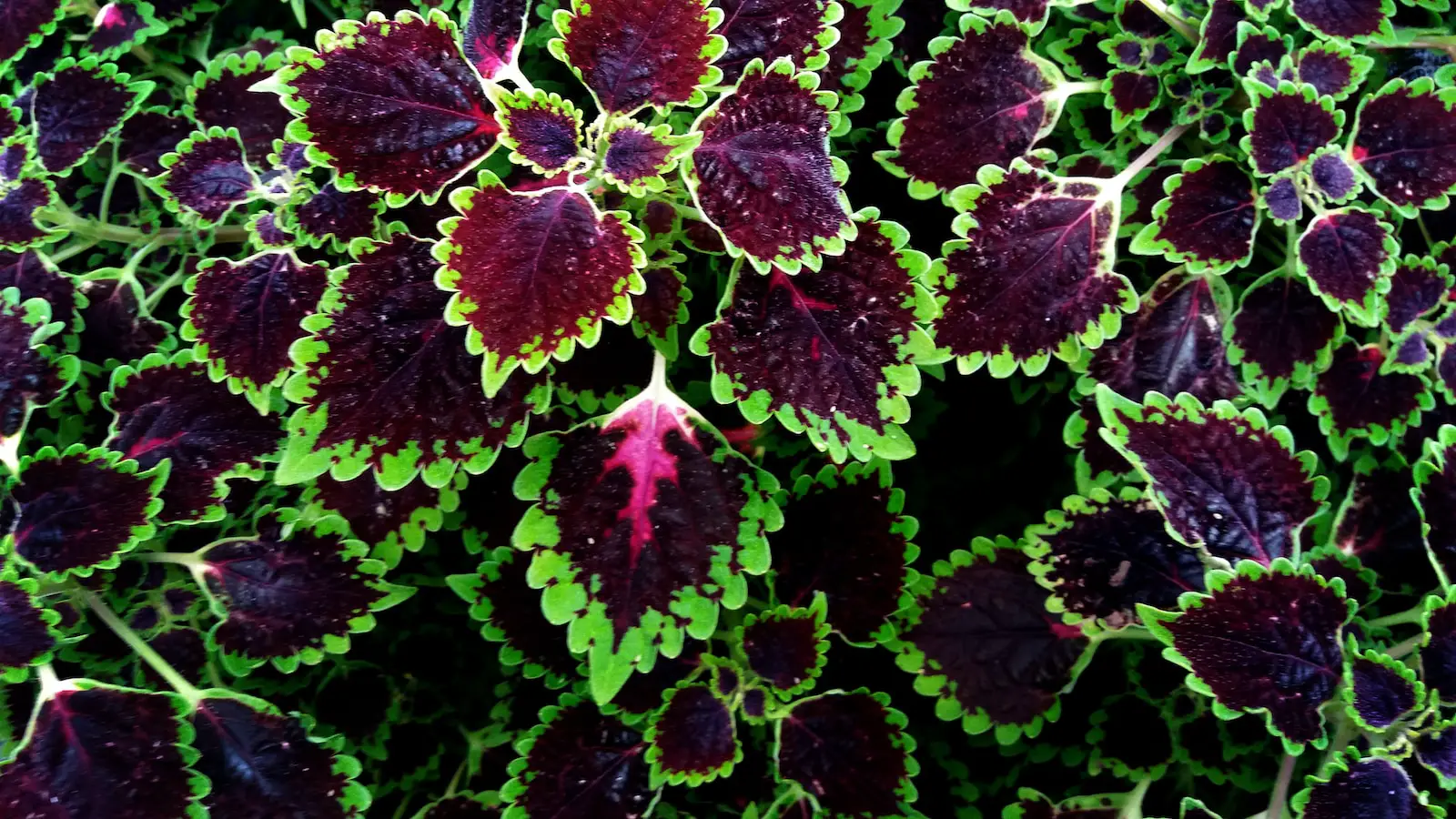Coleus, with its vibrant foliage, is one of the most eye-catching and versatile plants available to gardeners and indoor plant enthusiasts. Its spectacular array of colors, patterns, and leaf shapes has made Coleus a favorite for adding instant color to gardens, patios, and indoor spaces.
Native to Southeast Asia and parts of Africa, Coleus belongs to the mint family and is primarily grown for its stunning foliage rather than its flowers. Many people might not even realize that Coleus does produce flowers, as they are often removed to encourage leaf growth.
Known for its ease of care and adaptability, Coleus can be grown both indoors and outdoors. From simple green and red-tinged varieties to intricate patterns and shades, the options are nearly endless. Whether in a container or a garden bed, Coleus is a delightful plant that offers continuous visual appeal throughout its growing season.
| Attribute | Details |
|---|---|
| Common Names | Coleus, Flame Nettle, Painted Nettle |
| Botanical Name | Solenostemon scutellarioides |
| Family | Lamiaceae |
| Plant Type | Annual or Perennial (depending on zone) |
| Mature Size | 6-36 inches (varies by variety) |
| Sun Exposure | Partial Shade to Full Sun |
| Soil Type | Well-Drained, Rich, Loamy |
| Hardiness Zones | 10-11 |
| Native Area | Southeast Asia, Africa |
Coleus Care
Coleus care is generally straightforward, as the plant is quite adaptable. Selecting the appropriate location based on the specific variety’s light requirements, providing the right soil type, and maintaining adequate watering will ensure a thriving Coleus.
Pruning is an essential aspect of Coleus care, as it helps maintain a bushy appearance and encourages more colorful foliage. Regular feeding with balanced fertilizer supports healthy growth. Pest and disease management are typically minimal, making Coleus a favorite even among novice gardeners.
Light Requirement for Coleus
Coleus thrives in partial shade but can also adapt to full sun, depending on the specific variety. The intensity and pattern of the leaf coloration can vary with different light levels. While some varieties prefer bright indirect light, others might enjoy a bit of direct sun. Finding the ideal spot may require experimentation.
Soil Requirements for Coleus
Coleus prefers well-drained, rich, and loamy soil. Adding organic matter can help create the right soil texture and nutrition level. A pH range of 6-7 is ideal for most Coleus varieties.
Water Requirements for Coleus
Coleus likes evenly moist soil but is somewhat forgiving if you forget a watering. Avoid both overwatering and allowing the soil to dry out completely. Using a drip or soaker system can help maintain the right moisture levels.
Temperature and Humidity
Coleus enjoys warm temperatures and can suffer in cold snaps. If grown as an annual, it will not survive frost. Indoors, normal room temperatures suit Coleus well. Humidity levels around 50% are ideal, but the plant is quite adaptable.
Fertilizer
A balanced, water-soluble fertilizer applied every two weeks during the growing season will provide the necessary nutrients for Coleus. Avoid high nitrogen fertilizers, as they can lead to less vibrant leaf colors.
Pruning Coleus
Pruning helps maintain the shape of Coleus and encourages bushier growth. Regularly pinching back the tips and removing flower spikes (if they appear) will result in a more attractive plant with brighter foliage.
Propagating Coleus
Coleus can be easily propagated through stem cuttings. Cut a stem just below a leaf node, remove the lower leaves, and place the cutting in water or soil. Roots usually develop within a week or two.
How To Grow Coleus From Seed
Growing Coleus from seed is possible but may not produce plants identical to the parent. Sow seeds indoors about 8-10 weeks before the last expected frost. Use a seed-starting mix and provide warmth and moisture. Transplant seedlings after the danger of frost has passed.
Common Pests & Plant Diseases
Aphids
Aphids can be a problem but are usually controlled with insecticidal soap or neem oil.
Downy Mildew
This fungal disease can be prevented with proper spacing and airflow around the plants.
Common Problems With Coleus
Wilting
This can be a sign of either overwatering or underwatering. Adjust watering habits as needed.
Fading Colors
A lack of vibrant color might indicate inadequate light or excess nitrogen in the fertilizer.
Pro Tips
- Experiment with light levels to find the ideal coloration for your specific Coleus variety.
- Pinch back regularly to encourage bushy growth.
- Mix Coleus with other shade-loving plants for a stunning container garden.
- Consider bringing outdoor Coleus inside as a houseplant during winter if you live in a cooler zone.
- Be mindful of watering; Coleus likes moist but not soggy soil.




